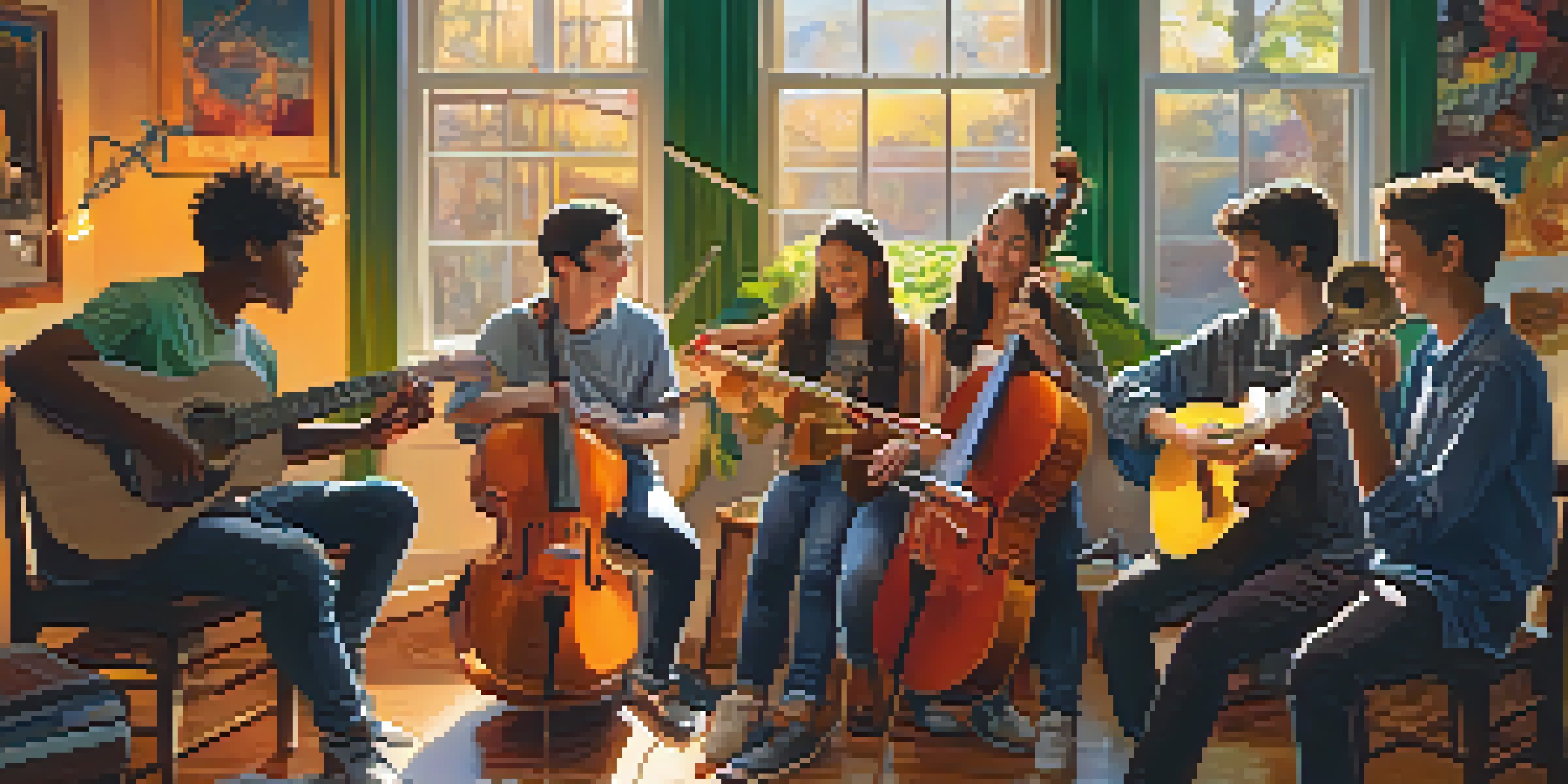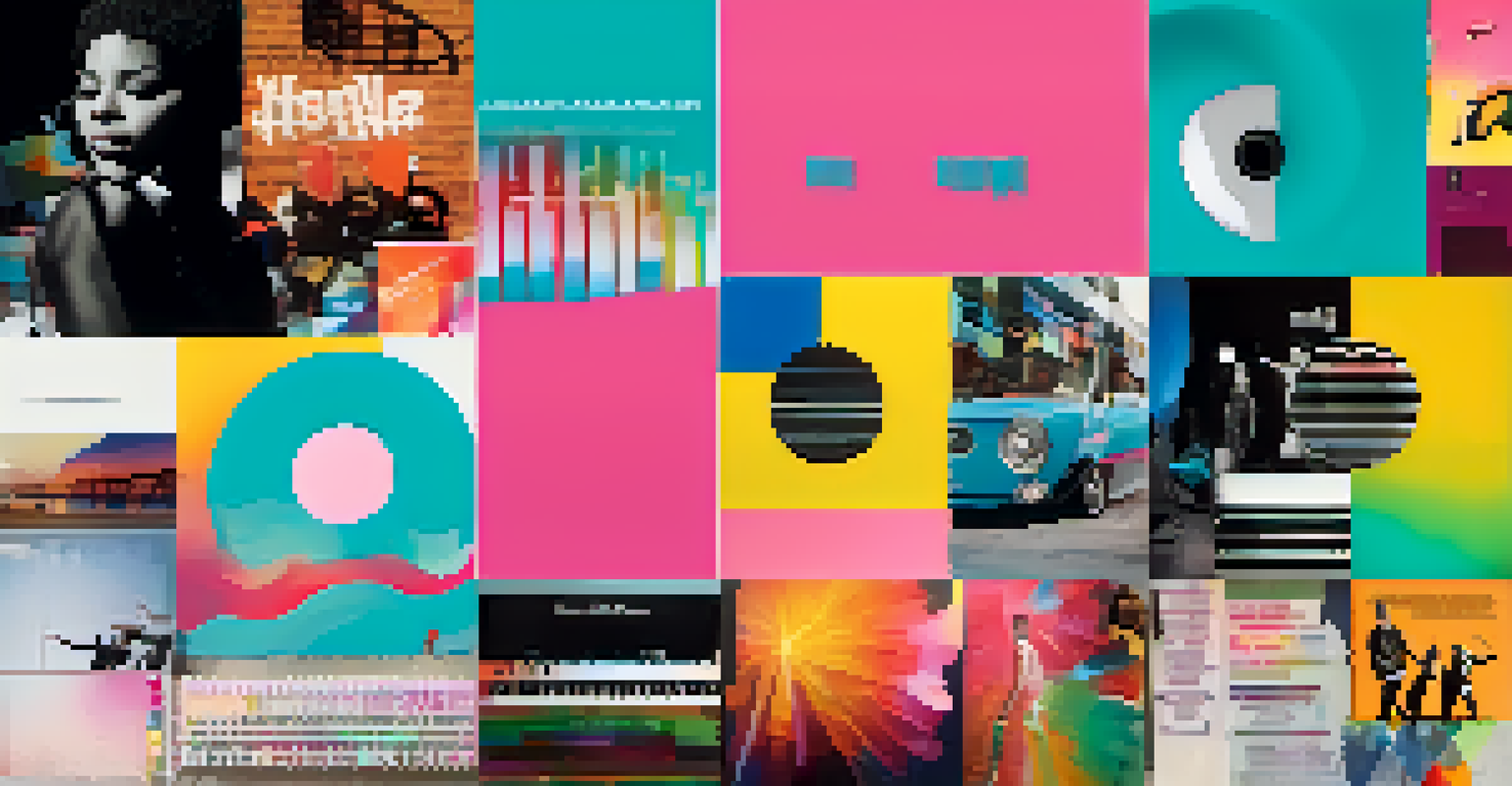How to Use Social Media for Effective Music Promotion

Identify Your Target Audience for Better Engagement
Before diving into social media, it's crucial to know who you want to reach. Think about your music's genre and who typically enjoys it. This helps you tailor your content and choose the right platforms for promotion.
People don’t buy what you do; they buy why you do it.
For instance, if you create upbeat pop music, your audience might be teens and young adults who are active on TikTok and Instagram. Knowing this allows you to create content that resonates with them, increasing the likelihood of engagement.
By understanding your audience's demographics, interests, and behavior, you can craft messages that speak directly to them, making your promotional efforts more effective.
Choose the Right Social Media Platforms for Your Music
Not all social media platforms are created equal, especially when it comes to promoting your music. Each platform has its unique features and audience, which can influence your strategy.

For example, Instagram is fantastic for visuals, allowing you to share snippets of your performances or behind-the-scenes looks at your creative process. On the other hand, platforms like Spotify and SoundCloud are more focused on audio, making them ideal for sharing full tracks.
Identify Your Audience for Success
Understanding your target audience allows you to tailor content and choose the right platforms for effective music promotion.
By selecting the right platforms, you can maximize your reach and connect with listeners in a way that aligns with their preferences.
Develop a Consistent Branding Strategy Across Platforms
Branding goes beyond just your logo; it encompasses your overall image and message. Consistency in your branding helps listeners recognize your music and feel more connected to you as an artist.
The best marketing doesn’t feel like marketing.
This means using the same colors, fonts, and tones in your posts across all platforms. If your music has a fun, energetic vibe, your social media presence should reflect that through lively visuals and upbeat language.
When your branding is cohesive, it builds trust and familiarity, encouraging fans to engage with your content and share it with others.
Create Engaging Content That Showcases Your Music
Content is king in the world of social media, and as a musician, it's essential to share engaging material. This could include short clips of your songs, live performance videos, or even funny behind-the-scenes moments.
For example, consider creating challenges or trends that encourage fans to participate, such as dance challenges on TikTok set to your latest single. This not only promotes your music but also fosters a sense of community among your listeners.
Engage and Build Relationships
Actively interacting with your audience creates genuine connections, fostering a loyal fanbase that supports and shares your music.
Remember, the goal is to spark curiosity and excitement about your music, so don't shy away from showcasing your personality and creativity in your posts.
Utilize Hashtags and Trends to Expand Your Reach
Hashtags are powerful tools for increasing visibility on social media. By using trending hashtags related to your music or genre, you can reach a broader audience who may not yet know about you.
For instance, if you're promoting a new release, consider using hashtags like #NewMusicFriday or #IndieArtist to tap into existing conversations. This can enhance your chances of being discovered by new listeners.
However, it’s important to strike a balance; using too many hashtags can appear spammy. Stick to a few relevant tags that align with your content to maintain a professional look.
Engage with Your Audience for Genuine Connections
Social media is not just a broadcasting tool; it's a platform for building relationships. Engaging with your audience by responding to comments, messages, and even creating polls can foster deeper connections.
For example, you might ask your followers which song they want to hear live next or share personal stories behind your tracks. This creates a dialogue and makes your fans feel valued and involved in your journey.
Utilize Analytics for Growth
Monitoring your social media analytics helps refine your strategy by revealing what content resonates best with your audience.
By nurturing these relationships, you'll cultivate a loyal fanbase that is excited to support your music and share it with others.
Collaborate with Other Artists and Influencers
Collaboration is a great way to expand your reach and tap into new audiences. By partnering with other musicians or influencers, you can combine your fanbases and introduce your music to new listeners.
Consider doing joint live streams, featured tracks, or even social media takeovers. For instance, a popular influencer could share your music on their platform, giving you exposure to their followers who may enjoy your style.

These collaborations can also inspire fresh content ideas and create exciting opportunities for both parties, making it a win-win situation.
Monitor Your Analytics for Continuous Improvement
To truly harness the power of social media, it's essential to monitor your analytics. Most platforms offer insights that show how your content is performing, including engagement rates and audience demographics.
By analyzing this data, you can determine what types of posts resonate most with your audience and adjust your strategy accordingly. For example, if videos consistently get more engagement than images, you might focus more on video content.
This ongoing process of evaluation and adjustment will help you refine your approach, ensuring that your promotional efforts remain effective and relevant.